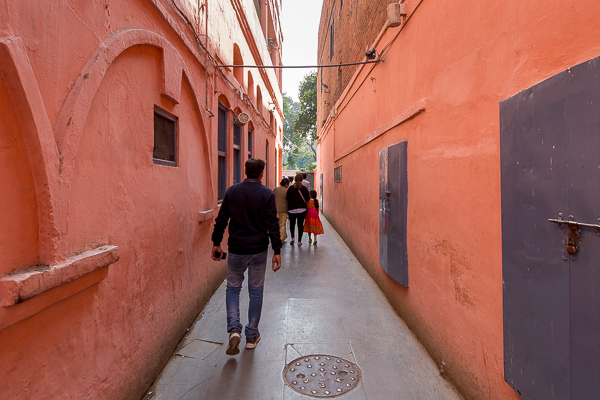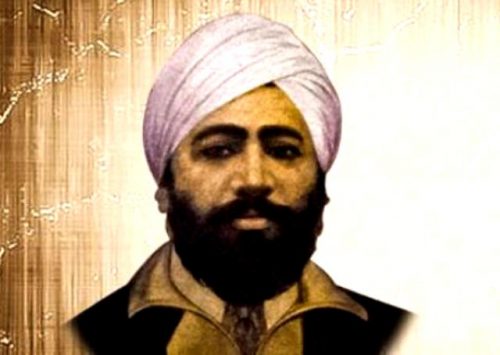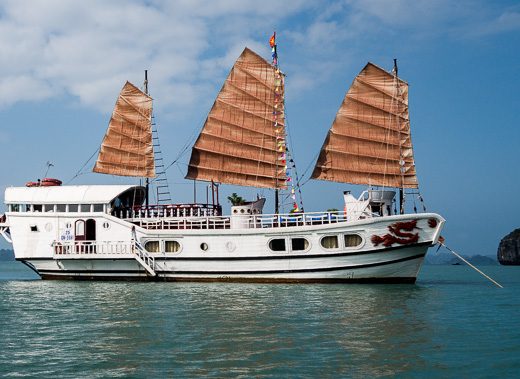Sometimes travel can be gut-wrenching. We experienced it in Cambodia visiting the killing fields, the torture facilities of Pol Pot’s regime, and the Landmine Museum outside Siem Reap. We experienced it in Laos, Vietnam, Bosnia and Herzegovina, China, and other countries. Yesterday, in the heart of Amritsar, in the Punjab state of India, we experienced it here.
Not too far from the walking street that leads to the beautiful Golden Temple, is a narrow street called Historical Lane, pictured above. The lane eventually opens up into what used to be a park, surrounded by buildings, called Jallianwala Bagh. Now, it’s a memorial for the still-disputed number of people that were killed and injured there on April 13, 1919.
A Brief History
Before I can explain what happened in Jallianwala Bagh, it’s important to understand what was happening in India back in 1919.
The British were in power here from 1858 to 1947, and during WWI, they had enacted emergency powers, which were rigid rules put in place to prevent insurgent activity, either real or perceived. When the war ended, the Indian population believed and expected that the measures would be eased, and people would be given more autonomy.
However, in 1919, the government of India passed the Rowlatt Acts which basically extended the stringent wartime measures into law. One of the most resented parts of the Rowlatt Acts was the ability for certain cases to be tried without juries and people to be jailed without trial.
The Rowlatt Acts were met with anger and frustration across India and led to Mohandas Gandhi calling for a one-day strike within the country.
In the Punjab state of India, news that leaders from Amritsar had been arrested and banned from the city sparked violent protests on April 10, 1919. Due to those protests, Brigadier-General Reginald Edward Harry Dyer and a group of soldiers were assigned to restore order to Amritsar. They enacted several directives to do so, one being a ban on public gatherings.
Jallianwalla Bagh Massacre
Just a few days after violent protests had broken out, a huge crowd, some estimate upwards of 10,000 people, met in the park called Jallianwalla Bagh. It is not known how many people were there to protest, or how many were there to celebrate Baisakhi, a spring festival with family and friends. Since the ban had only been enacted three days prior, most people were unaware that there were any rules on their gathering.
This is where the Historical Lane plays an important role. Not only is it a beautiful narrow street, it was also the only entrance to Jallianwalla Bagh. BG Dyer and his soldiers, our guide said about 90 soldiers, sealed the exit, and without warning opened fire on the unarmed crowd. The soldiers only stopped when they were completely out of ammunition. They also had brought at least one armored car with a machine gun, but the Historical Lane was to narrow for it.
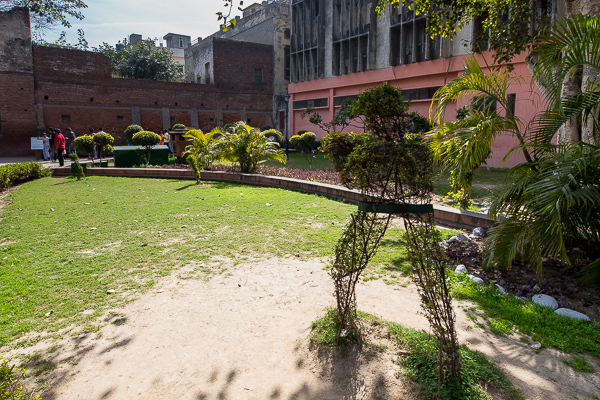
This shrub in the foreground has been trimmed into the shape of a soldier holding a gun. The brick wall on the left side of the photo it is still riddled with bullet holes from that April day.
The number of deaths of men, women, and children was recorded in one official report at 379 with more than 1,000 injured, but that number has been disputed and many, like our guide, believe the number of dead to be more than 1,000 with several thousand more injured.
Response to Jallianwala Bagh
BG Dyer said his decision to open fire at Jallianwala Bagh was for “moral effect” on the Punjabi population. Going even a step further, martial law was instituted after the massacre.
Gandhi reportedly felt torn after the massacre, since he supported the British in WWI, but couldn’t support what they were doing in India. He began organizing nonviolent protests in the belief that India needed to be independent.
The Indian government did order an investigation into the Jallianwala Bagh Massacre, but it took until 1920 until Dyer was ordered to resign from the military. Back in Britain, the reaction to Dyer’s actions was mixed.
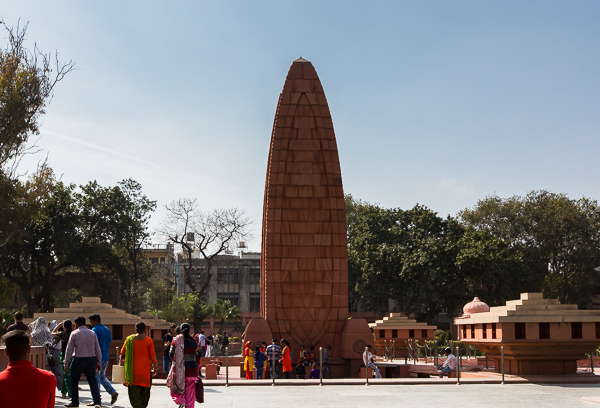
This monument in Jallianwalla Bagh, is dedicated to all those who lost their lives in the massacre. It is supposed to be the flame of an ever-burning candle.
Winston Churchill, secretary of war at the time, gave a speech (more than a year after the massacre) to the House of Commons and said:
“…one tremendous fact stands out – I mean the slaughter of nearly 400 persons and the wounding of probably three to four times as many, at the Jallianwala Bagh on 13th April. That is an episode which appears to me to be without precendnet or parallel in the modern hisotry of the British Empire. It is an even of an entirely different order from any of those tragical occurences which take place when troops are brought into collision with the civil population. It is an extraordinary event, a monstrous event, an event which stands in singular and sinister isolation.”
The House of Lords, on the other hand, praised Dyer and bestowed upon him a sword with “Saviour of the Punjab,” inscribed on it. There are still many people, even today, who believe that Dyer was in the right.
An O’Dwyer Twist
One other person who played an important role in the massacre was Sir Michael Francis O’Dwyer, the Lieutenant Governor of Punjab from 1912 – 1919. He, along with other senior officials and officers supported Dyer in his methods to restore order to Amritsar after the response to the Rowlatt Acts.
After the massacre, when more information came out about Dyer’s actions and many spoke against Dyer, O’Dwyer stood fast in his support of Dyer. Many even believe that O’Dwyer played a role in planning the massacre.
Many years after Britain no longer ruled India, O’Dwyer was assassinated by Udham Singh, an Indian revolutionary, in retaliation for the massacre. Udham Singh was convicted and hanged shortly after.
